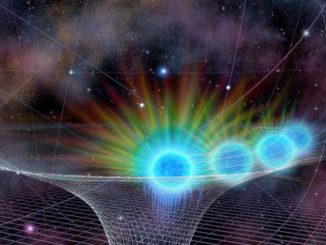Galaxy Z 229-15, some 390 million light years away in the constellation Lyra, is a luminous example of how astronomical classifications can overlap. It is sometimes viewed as an active galactic nucleus, or AGN; a quasar; and a Seyfert galaxy. It is actually all three at once. The AGN classification means a supermassive black hole lurks at the heart of the galaxy, sucking in surrounding material that radiates huge amounts of energy as it is heated to enormous temperatures, giving the galaxy an extremely bright core. Quasars are a specific type of AGN, a galaxy that is both very bright and very distant, at least several hundred million light years from Earth. By that standard, Z 229-15 is a relatively nearby quasar. A Seyfert galaxy is one hosting a very bright AGN – a quasar – that does not outshine the rest of the galaxy. Galaxy Z 229-15, as imaged by the Hubble Space Telescope, fits the bill in all three cases.




